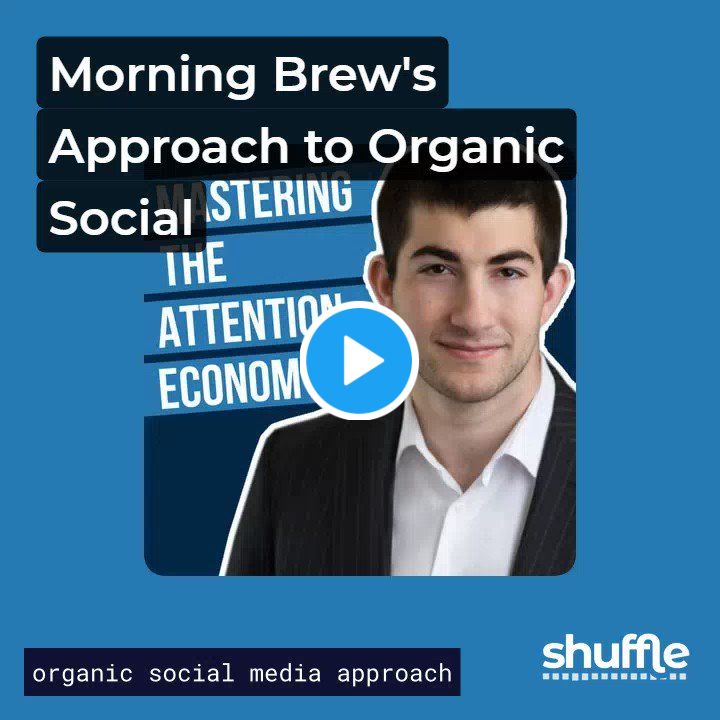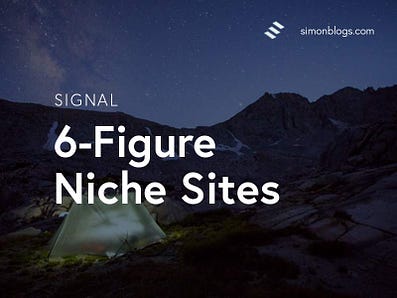 |
Hey Everybody!
Another Signal Special Edition hitting your inbox this week. Today we’re going in on Niche Websites. More on that below.
FYI: For our new subs, the Special Edition is where we go deep into one topic. I’m going to be doing more of these, to help you understand the inner workings of the most successful startups. Specifically, I’ll dive into what growth levers they pulled on their journey’s towards 100, 1000 and 10k+ users.
Startup Labs: Your invites are in your inbox. Click the link to join - see yah there!
Let’s get down to it then!
🧨 Build A Business
// Follow along, as I actually start and build an internet business, step-by-step
Whoop whoop!
Because this segment is for you, I need your input on what’s going to make it most valuable for you. Look out for a mail today from me where you’ll get to vote on what business we’re building (only subscribers already paid and joined will get to vote). You’ve got to choose one from only two ideas, and it’ll be as easy as clicking a button.
Once all the votes are in, Build a Business segments go out on a Friday. Keep an eye out for ‘em! First one dropping this week as we start the journey of building a business together.
Hope you’re as excited as I am.
Not sure what this is about? Read more here (Scroll down a bit to the Build A Business segment).
ℹ️ Background
What Are They?
A niche content site is just a website where people wanting to know about something in a certain niche go to find that out.
If you take any sub reddit, and create content specifically tailored to that audience, it would be a niche content site.
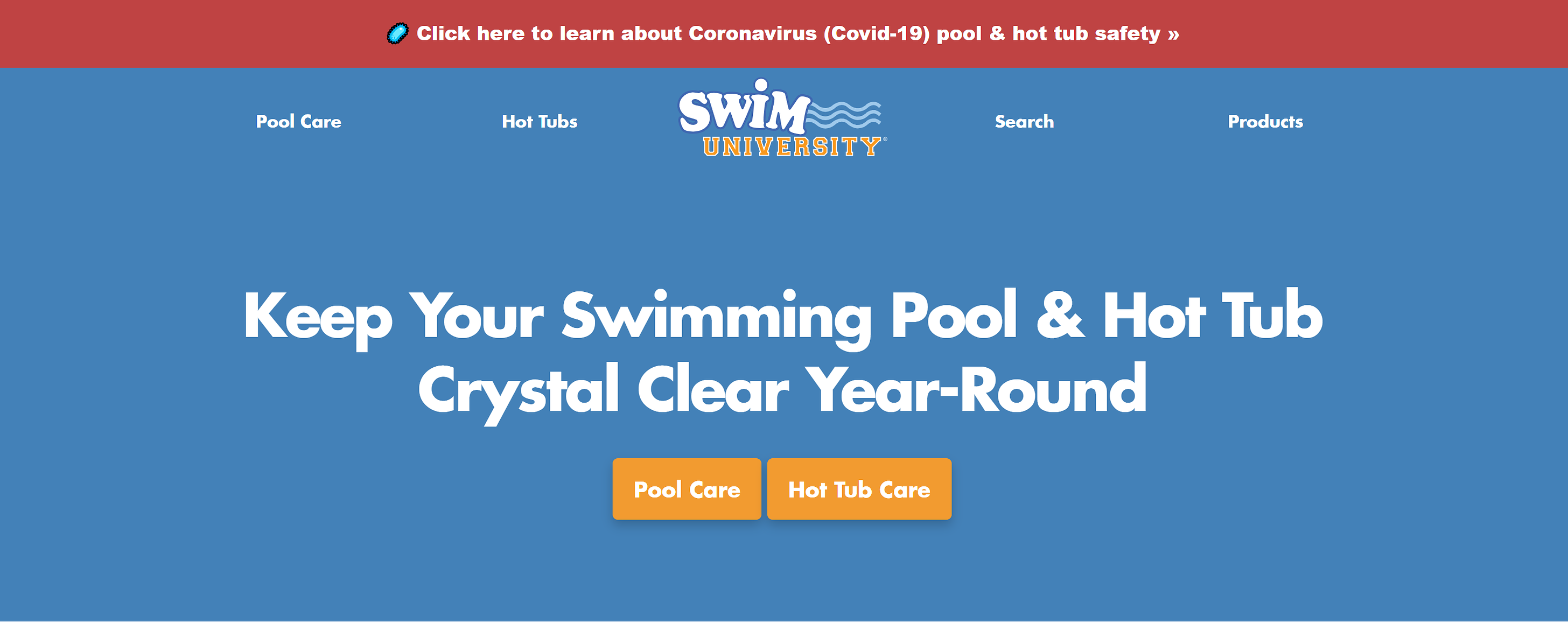 |
Swim University is the perfect example of a niche site: Everything you need to know about keeping a pool clean.
How Do They Work?
The fundamentals of it are as follows:
Pick a specific niche.
Create content around that niche, and post it on the website.
Drive readers to that website.
Build an audience of readers.
Monetize that audience.
A Modified Approach
The approach I’m going to give you here uses the framework above, but modifies the Monetization step slightly.
The goal is simple: Get to revenue as fast as possible.
We’ll go into monetization further below, but the gist of it is this:
Traditional niche site model requires a ton of traffic to make decent money (especially today).
My model requires a few thousand views a month with high intent and in a specific niche.
Examples
SwimUniversity.com (above) - Pool care
GearLab.com - Outdoor gear reviews
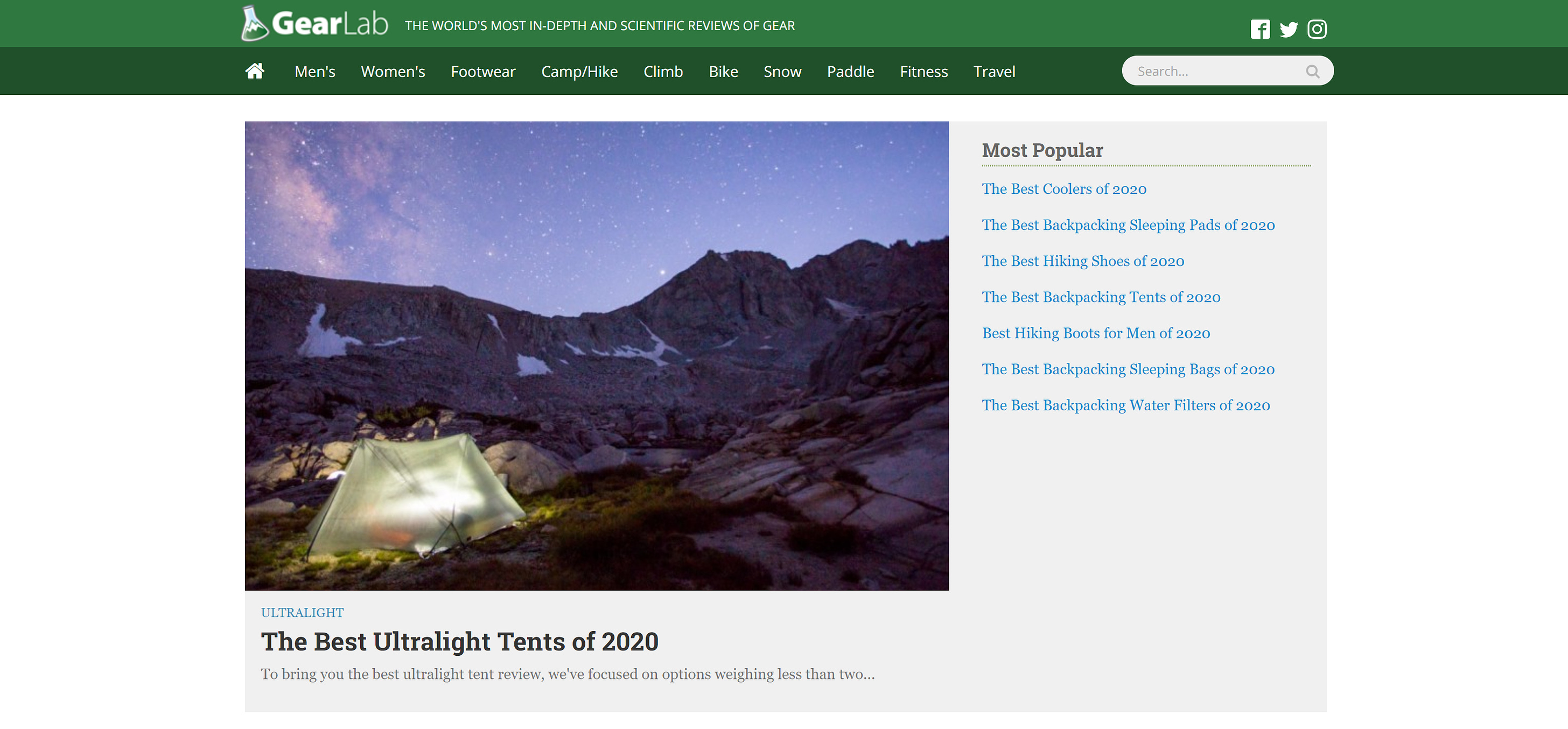 |
ApartmentTherapy.com - Kit out and care for your trendy apartment
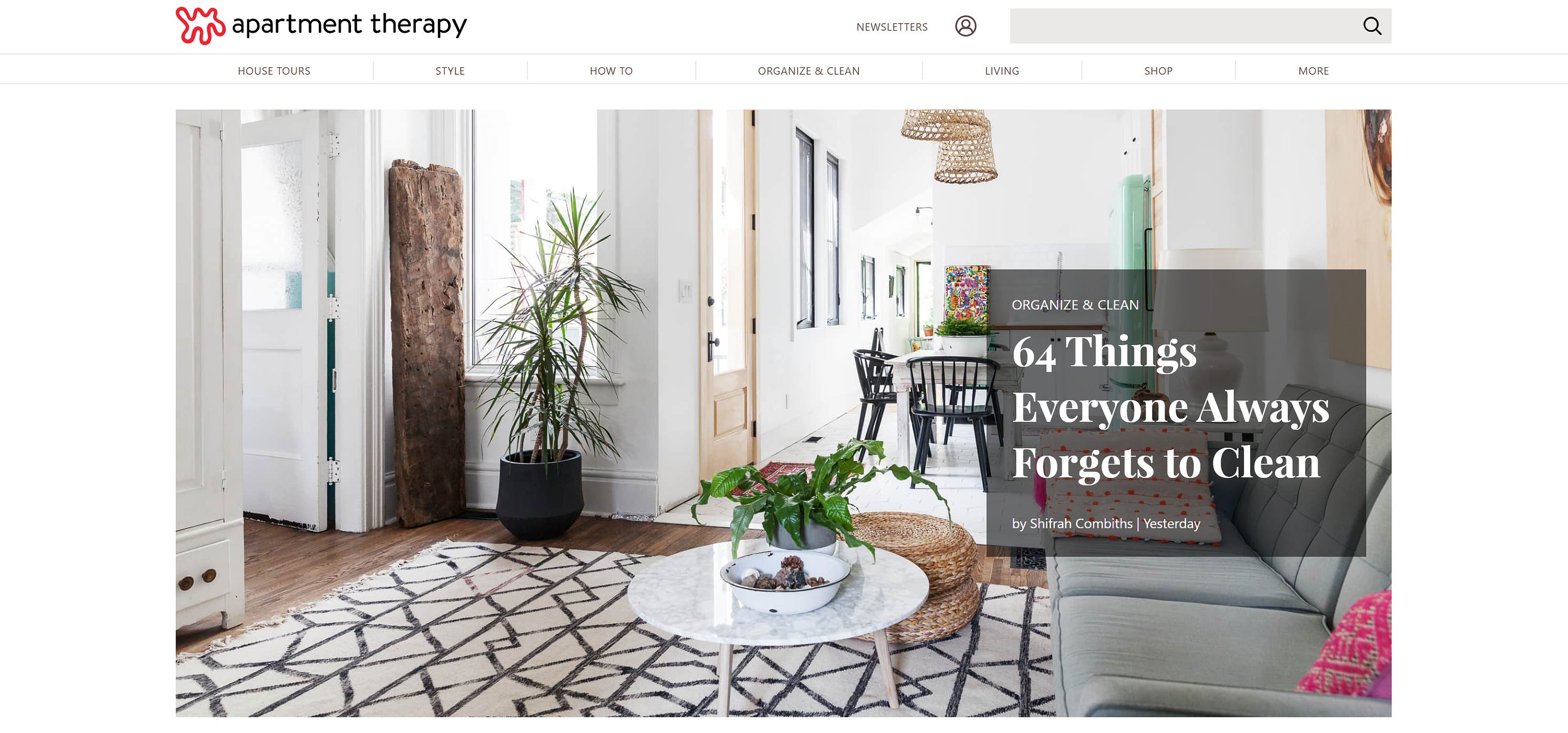 |
Fatherly.com - A site for dad’s
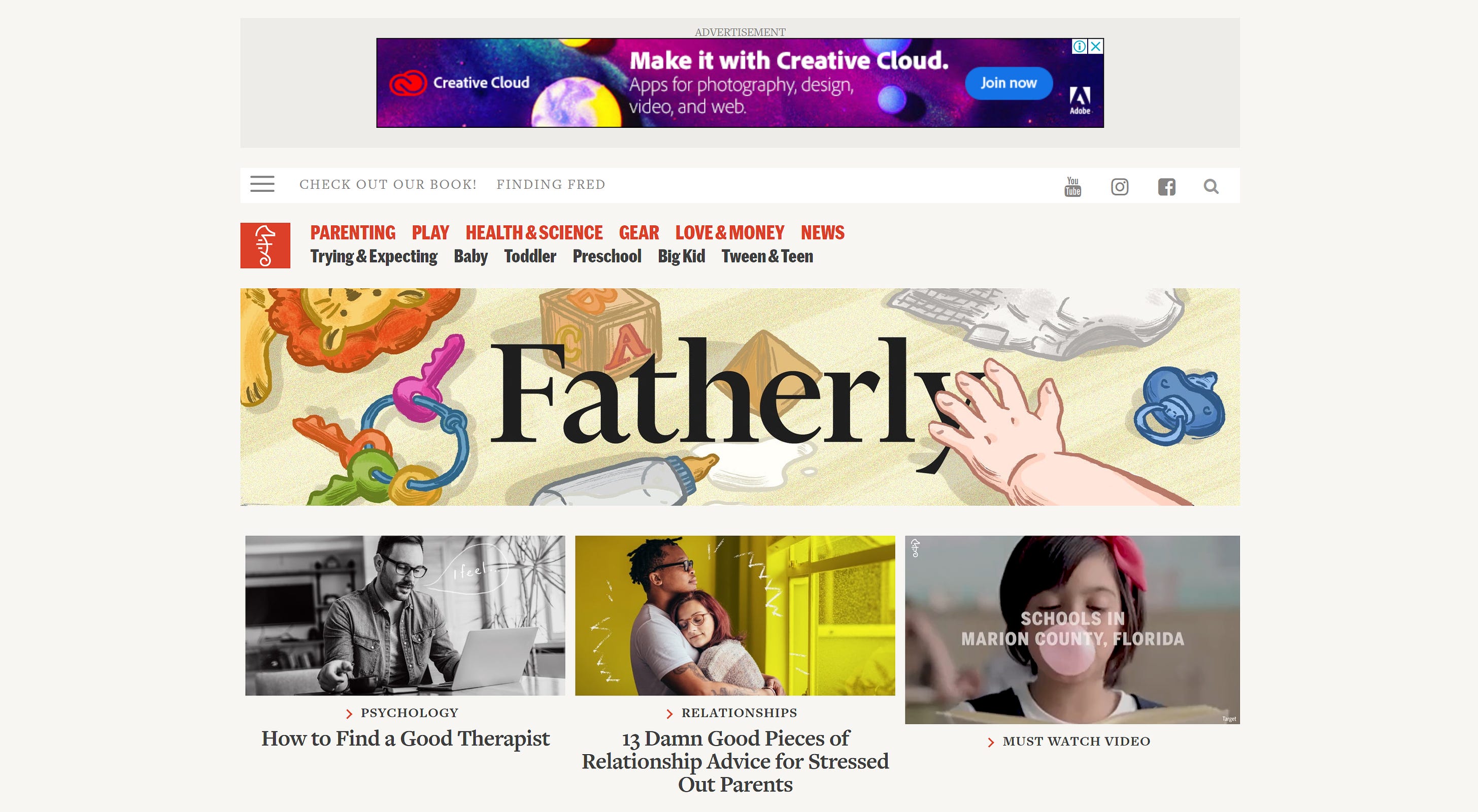 |
Motivation
Before you continue, understand your motivation for wanting to do this.
Here’s mine: Cash. Niche sites are great cash generators if you can get them right. As long as you have a steady flow of traffic, they can bring in a (mostly) reliable income every single month.
For me, that means not having to worry about rent as an expense.
For you, it might mean an additional income to fund your startup.
Get clear on your motivation to do this so that when things aren’t going so well you know whether to knuckle down and commit, or bail out because it’s taking too much time and energy to achieve what you want.
These aren’t sexy businesses, but they work if you do ‘em right.
🚵 Pick A Niche
And validate it, too.
This is my unconventional advice: Start with your interests.
The thesis behind that is: If you’re not interested in it, you’re not going to want to create content about it.
One thing I do know is that for this to be successful you have to commit to creating enough content.
There are a few things you need to consider when picking a niche, though.
Audience size
You need a big enough audience to make this viable. Golf = too broad and too competitive. Left-Handed Blind Golfers = too niche. You get the point.
I would define niche as SwimUniversity.com (above).
I would define micro-niche as SwimUniversity.com but for glass fibre pools only.
As a guide - though this is very dependent on your audience and monetization method - your monthly search volume shouldn’t be lower than 30k visits (or 1k visitors a day).
Can you monetize it?
Does this audience typically spend money on this interest? Either directly or indirectly. If yes, then the answer will almost always be continue.
or…
Can you generate a ton of search traffic (100k monthly +), which you’d be able to monetize through Display Ads? This would require large search volume for your search keywords, as well as low domain authority for the competing sites. This is generally only available in completely unexplored niches (of which there are very few around).
How does that audience consume most of their content?
And can you create that content. If your niche consumes mainly blog posts, great. Low barrier. If they mostly consume well produced video content, and you have no experience doing that = bit higher barrier.
Do This Now
Write down all your interests, and then some. Aim for 50 ideas.
Rank them in order of how ‘niche’ they are. Ie: How many other people are there who share this interest in the world.
Then rank them in order of your interest in each of them.
Choose the top 5 combined ranking.
Sign up for a keyword volume research tool (Most of them offer free trials). I use Mangools. It’s a lot cheaper (and a bit less powerful) than SEMrush or Ahrefs, but it suits my needs perfectly.
Do a search for your topic and start collating and creating keywords with monthly search volume > 500 and keyword difficulty < 30. Go after long-tail keywords if you can’t find any.
If you’re new to this, I haven’t found a better resource than Neil Patel’s guide to keyword research.
When you’re done, you should have a good idea of the amount of monthly traffic you can generate (remember, you’re going to have to rank on the first page for those search terms to get a portion of that traffic!).
Giving hard and fast rules about traffic volume and keyword difficulty targets is difficult.
Andrew Boscini put it well to me on Twitter the other day:
Are you going for a ton of traffic that converts in the low % range, or are you going more niche, with very high search intent?
I’d also recommend snooping around the following forums/places to get a sense for the community you’re diving into and what the pain points are:
Reddit (Find all the applicable sub-reddits)
Quora (What questions are people asking)
Websites/Forums (Who are you competing with)
Wikipedia (What information can I give on this niche)
Twitter (Do a search and see who the top authorities in the space are)
Facebook Groups (How many are they, are they engaged or spammy?)
As you pick up on areas of discussion, do a search for them as they relate to your niche in the keyword finder and add all those keywords to your list too.
✍🏽 Content
That’s the fun part done.
Now that you’ve got your keyword list defined, you need to start writing content. Religiously.
This is where most people fail on niche sites. They write a few (maybe 5 or 6) articles, and then they get bored and move on. That’s why I said earlier you need to pick a niche that you’re interested in.
As a guideline, you’re likely going to need to write 100-odd pieces of content in a year.
If you think that’s unachievable in the niche you’ve selected (because you’ll get bored or otherwise) you have two choices:
Go back to the step above and choose a different niche that you’re going to be interested enough in.
Hire writers (money required).
Do This Now
Once you’ve decided on your niche, start writing. Open a Google Doc and begin on your first piece of content. Aim to put out 2 or 3 pieces for 3 or 4 days back to back.
You should be going after your most valuable keyword’s (high search, low keyword difficulty) first.
After 3 or 4 days, you’ll have a good idea for the tone/style of your content and you’ll be better positioned to register a domain and setup a home for your content.
Try and follow the theme of the example domains I showed above. Preferably including one of the main keywords which describes your niche in the url.
Don’t get hung up if the ideal .com domain isn’t available. There are other options:
Your country’s domain extension (only do this if you’re looking to only attract an audience in your own country)
.co is a great option
.io is well recognized in the tech-space
Your domain name is not the be-all and end-all. A nice one is nice to have, but it’s not essential.
Without a doubt, Wordpress is the best option for a quick and easy setup.
Your domain/hosting provider will likely have some sort of installer for Wordpress available in the backend (Softaculous, usually) which will do it for you.
Install a theme. I get mine from Creative Market.
Again, don’t get hung up on the details. You’ll be surprised by how little people care about the nitty-gritty things that seem to be a big deal to the website-owner.
If your site works well, looks reasonably good, loads quickly, with great content - that’ll do.
Post your content. Add images. Add external links (more on this later).
Add a method of collecting email addresses! Don’t just have a generic “Join our newsletter” either. No one wants to join just another newsletter.
Give your readers an actual incentive for signing up: “Join our newsletter for exclusive access to subscriber-only content”.
Remember to install:
Yoast SEO plugin (for on-site SEO help)
Google Analytics
Facebook Pixel
🖱️ Traffic
Now for the most important (but also the most tedious, for me) part: Driving traffic.
Putting up content and hoping for the best almost never works straight away. It’s likely that if you just left your content, it would take a few months for even a little bit of traffic to trickle in. Sometimes it wouldn’t at all.
In SEO there are these pesky things call back-links. Here’s how it works:
As a new site, you have an extremely low Domain Authority.
To increase your DA, you need other websites to point to your website using links on theirs.
This tells Google that “oh, this new site with that content on it is actually valuable, and people searching on Google might want to read what they have to say”.
Neil Patel is again an authority in this space, and I’m not going to be able to do a better job of explaining it to you than his article on: How to build high quality backlinks in a scalable way.
👆 is the perfect example of backlink. Neil is an authority in the space, I’m sending users from my website to his, because he knows a ton about that area. That’s what you’re trying to achieve.
Backlink building, though not absolutely necessary, is a sure way to increase your domain authority, and therefore your traffic. It also means you can start targeting keywords with a higher difficulty.
External
Don’t neglect other sources of traffic. You can leverage the already-available audience of other sites just by cleverly engaging on them.
Here are some options:
Facebook (through either groups or your own page)
Quora (By answering questions, having a link to your site in the profile, or linking directly from the answer)
Reddit (By tactfully engaging in the communities and - where allowed - including a link to your site)
Pinterest (Creating Pinterest-ready content. Again, our friend Neil has some ideas for us.)
The key to success on each of these platforms is tailoring the content to that platform.
Harry Dry is a master at this. When he creates on piece of content, it gets repurposed for every site he engages on. Here’s how he does it.
Facebook has a virality effect to it. If you understand the audience and give real value to them, it’s likely that your content will be shared.
Building your own Facebook group where your audience engages in not a bad idea, either. If it gets big, you’ll have a few thousand readers to every article you post every time there’s something new.
Reddit has highly-engaged communities that (mostly) don’t take kindly to spam and self promotion. Always do it tactfully. Most of the time if you post something very valuable, people will ask for for more resources, then you can drop in your link.
Do This Now
Go onto Facebook and search for groups around your niche. If there are none, start one.
Go onto Reddit and join 3 sub-reddits related to your niche. Sort the posts by Top in the last Year and then read. Make notes on patterns you pick up on and what posts perform best.
Find any other places where your audience hangs out (Forums, Twitter, Instagram hashtags etc.) and poke around.
Keep a list of all of these places where you can post your content.
🧑🏽🤝🧑🏽 Audience
Once you’ve started driving traffic to your site, you need to build an audience.
When you own your audience, you own your distribution. That means you can engage with them and prod their pain points to find out how you can help, and then sell to them based on what they’ve told you (neat, ‘ey?)
Collecting emails is the best way to do this. That’s why I encouraged you to set it up it right from the word go.
Mailchimp is a great, free-to-start, option. You can use a popup like Optin Monster on Wordpress to stop users from leaving before.
Harry Dry (MarketingExamples.com) also did a case study on how to create a website that converts readers into subscribers. A quick summary:
Ask!
Popups work.
Popup timing matters.
Have a subscribe page.
Be personal.
Make it look nice.
Add social proof.
Here’s my email-sub popup (It actually needs some work!):
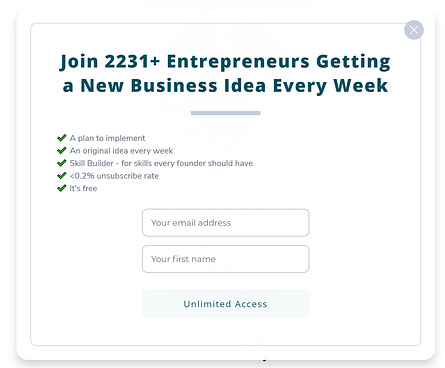 |
Do This Now
Setup your email provider (if you haven’t already).
Setup a popup.
Build a subscribe page.
🤑 Monetize
There are essentially four main strategies to monetize a niche site:
Affiliates
Advertising
Products
Services
You’ve got traffic and an audience. You’ve now got to choose how to monetize it.
Products
My choice here is hands down: Products.
I say this because I think they:
Bring in revenue fastest
Can bring in the most revenue per conversion
Are genuinely helpful
Very low risk (you can literally poll your audience for what they want)
Let’s look at the economics of a very simple online product: an eBook.
We’ll set the price for our arbitrary organic backyard garden eBook at $15. Let’s say we have 30k monthly visits to our site. If we convert 1% of that traffic to paying customers (300) we have $4500 a month ($54k a year). That’s from one eBook alone. The idea would be to have multiple different options and increase that conversion rate to the 5% mark.
On the other side of that, let’s say you offer a complete strategy, with online coaching and a bunch of extra add-ons for $500. If you convert only 0.1% of your traffic (30 users), you’ll yield $15 000 a month ($180k a year).
That said, you don’t have to go with one strategy only.
Affiliate
The affiliate model is a great way to have a constant stream of income every month. The issue here is traffic numbers. For an affiliate model to earn you a decent income you need a good mixture of the following:
Large volume of search traffic
A high conversion affiliate setup
Partners in your niche
Decent affiliate share % in your niche
Products available
Amazon recently announced a big change to their affiliate program. They’ve reduced the amount they’re paying in most categories by more than half. That means that the affiliate model has become much more difficult to get right. There’s a bit more work required to find products which you can sell.
I also don’t believe in the affiliate model entirely. Here’s an example: If you google “How to start a blog” you’ll see a ton of posts. On almost every single one of those posts, the writer will recommend you setup your hosting with Bluehost. Why? They pay the largest commission share of the hosting providers. Are they the best? Absolutely not. There are a ton of better, cheaper, more secure options.
Services
Services run in almost exactly the same way products do. The only difference is instead of selling an eBook, you’re selling your (or someone else’s time).
I don’t like this model for the simple fact that I hate giving away my time. The purpose of these businesses (for me) is to create a cash stream that requires little effort.
I’d much rather put my knowledge into a product, and sell that, than give my time away.
That said, if you have expertise that can only be delivered in one-on-one manner (like business audits for example), there is money to be made for high-price consulting. The same conversion rates and economics apply as products, all you’re exchanging is an hourly rate for a product.
Advertising
Advertising comes in a few different forms. Here they are in my order of preference:
A site-wide sponsor (MarketingExamples.com is sponsored by Email Octopus).
A per-edition sponsor (The Hustle newsletter has an audience of over 1 million subscribers and sells sponsorships on their daily newsletter for thousands of dollars)
Display ads (Embedded ads from either Google or a niche ad provider like Carbon ads)
Sponsorship is going to require two things:
A relatively large audience (depending on the niche, and the engagement)
A highly-engaged audience (non-negotiable).
I’ve never played in this space so I don’t know the economics of it, but it is definitely my last resort.
To give you an idea of the economics:
Google Ads CPM’s can range from $0.30/1000 to $2.50/1000, depending on your niche, audience and location. Taking a reasonable (and easy to work with) estimate of $1/1000 views, to make a monthly revenue of $4500, you’d need 4.5 million monthly views. Obviously, this is going to vary,, but the gist of it is: Using Google/Display Ads as your main source of revenue is going to either take a long time, or a lot of investment.
If you’re going to play in the advertising space, you’d be better served approaching niche brands, applicable to your audience, and asking the for direct sponsorship.
📈 Grow
When your site starts generating income, remember to keep some cash aside to re-invest in the business. I would set aside minimum 20% of your monthly revenue for this.
Here’s what you might consider:
Content writers and creators
This free’s you up to do what you want to (or start another niche site).
SEO Consultant
SEO requires constant work. A change in Google’s algorithm can destroy your incoming traffic overnight. Having someone monitoring this periodically is worth while. Following up on back-links, optimizing on-site SEO and updating old posts are some of the tasks they would do.
Traffic diversification
The main goal here is to ensure you’re not entirely dependant on one source of traffic (like Facebook, for example). This person would expand your outreach to different channels, and balance out (and grow) your incoming traffic. This is a risk-mitigation strategy that’ll make a quite fickle business model more robust.
Back-link building
This is tedious work. Cold emailing, constant reminders and outreach and content creation. This person would focus entirely on growing your backlinks by creating viral/shareable content and reaching out to partners who might want to link to your site.
Aaaaand that’s it. A (quite) comprehensive guide to building a six-figure niche content site.
📣 What’s-a-Twitter
// The tweet of the week, from someone I follow over at @simon_blogs
A thread on how Toby Howell (@tobydoyhowell)grew the Morning Brew’s Twitter following organically to 65k followers. A lot of lesson’s in there about audience-building in general.
🖱️ Clickworthy
// Valuable tidbits from around the interweb
🧰 What you can learn from someone managing $2.5M in monthly Facebook Ad Spend
🛠️ 10 Facebook Ad Hacks from a 10-year FB Ad expert
💡 Why having a good market matters more than a good product
📖 I’m currently two chapters into Mastery by Robert Greene. So far, an excellent read.
🍲 Off-topic: I have been super busy this week trying to get a bunch of things off the ground while also managing a company full-time. This recipe for a vegetarian egg-fried rice has been my saviour. It’s so quick and easy, and I eat it for just about every meal. You can make a bunch at once and add different sauces to it to shake things up.
👋 The End Notes
That took me quite a while. I hope it was valuable for you. If it was, consider sharing it with a friend:
If you’re the friend who got this shared with you, you can sign up here:



